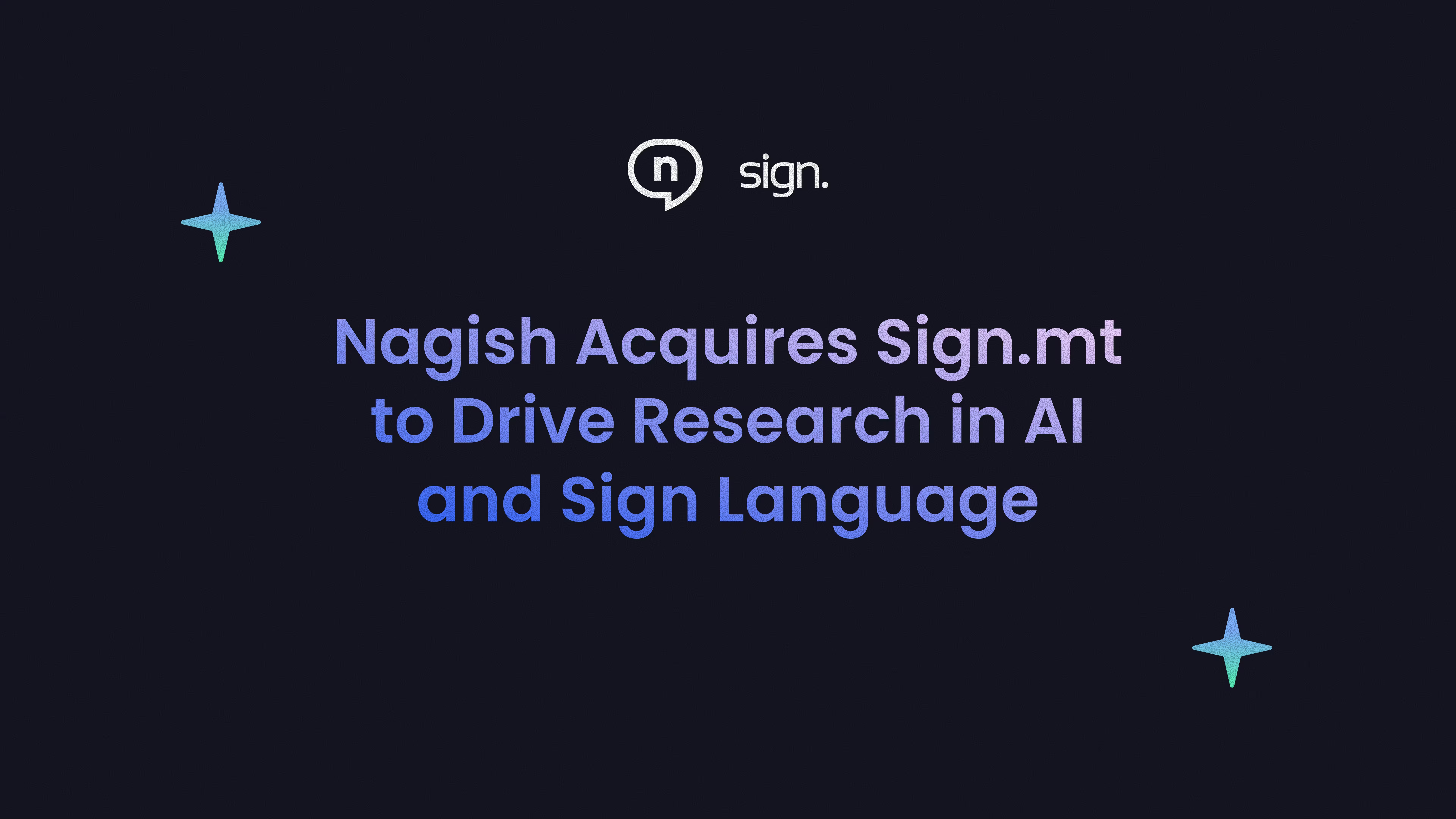Nagish Acquires Sign.mt: A Leap Forward for AI & Sign Language Research
Nagish has acquired Sign.mt, a pioneering AI company in real-time sign language translation. Together, we’re expanding accessibility and driving AI research in sign language.

We’re excited to share a new chapter at Nagish: We’ve acquired Sign.mt, a groundbreaking AI company focused on real-time sign language translation.
This milestone expands our commitment to accessibility, using technology to bridge communication gaps and empower millions of people who use sign language around the world.
Why this moment matters
In the U.S. alone, more than 500,000 deaf and hard-of-hearing people use American Sign Language (ASL) as their primary language. Yet there are only about 10,000 certified ASL interpreters nationwide.
That imbalance means far too many conversations at the doctor’s office, at work, in classrooms, or public settings remain out of reach.
At Nagish, we believe AI can help change that. This acquisition brings us closer to a future where technology complements human expertise, creating more opportunities for deaf and hard-of-hearing individuals to connect freely.
What Sign.mt brings to the table
Sign.mt has built award-winning technology that uses computer vision, generative AI, and translation research to understand and translate sign language in real time.
Their breakthroughs in language processing and visual recognition open up exciting possibilities for accessibility, possibilities we’re eager to explore and expand within Nagish.
Watch the acquisition announcement in ASL using the Nagish Sign technology.
Leadership driving our vision
We’re thrilled to welcome Dr. Amit Moryossef, founder of Sign.mt, to Nagish as our Head of Research.
A leading expert in Sign Language and Natural Language Processing (NLP), Dr. Moryossef has spent years advancing the intersection of language and AI. His work has already helped shape how technology understands and supports sign languages and now, he’ll lead our research efforts to bring those innovations to life at Nagish.
What’s next
With Sign.mt joining the Nagish team, we’ll be focusing on two big goals:
- Expanding our research: Understanding and researching the latest applications of AI on language translation.
- Community Impact: Our research and sign language translation tools will be developed with and for the deaf community. Nothing about us, without us.
Looking ahead
Our vision has always been clear: a world where communication is seamless, inclusive, and accessible to everyone.
The addition of Sign.mt helps us take another big step toward that reality, one where AI enhances human connection rather than replaces it.
We’re grateful to our community, our partners, and everyone who believes in our mission. The future of accessible communication is bright and we’re just getting started.










